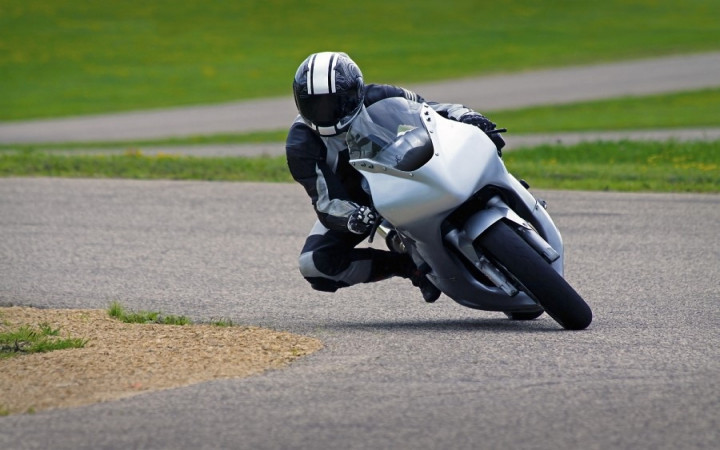Today’s Wonder of the Day was inspired by Becky from Lubbock, TX. Becky Wonders, “How do motorcycles work, and how can a driver stay as safe as possible?” Thanks for WONDERing with us, Becky!
Have you ever noticed how motorcycles and bicycles have kickstands, but cars and trucks don't? Maybe you've never thought about it, but it's true! Just take a look around. We dare you to find a car or a truck with a kickstand.
OK…so maybe we're being a little silly. Of course, cars and trucks don't need kickstands! They have four tires that keep them flat on the ground at all times. Motorcycles and bicycles, on the other hand, would fall over without a kickstand.
What do you do when you start riding a motorcycle or bicycle, though? You put the kickstand up. Why don't you still need the kickstand when you're in motion? What keeps a motorcycle or bicycle from falling over when it's in motion?
We wish there was an easy answer, but unfortunately there's not. It's one of those curious mysteries of science. Scientists have been able to send a man to the Moon, but they still don't fully understand the complex mix of forces and physical properties that keep motorcycles and bicycles from falling over while they move!
Scientists noticed long ago that motorcycles and bicycles tend to remain upright and steer in a straight line if they're moving forward fast enough. So scientists set about trying to figure out why that was the case. After years of research, they do understand some of the forces and physical properties at work.
For example, early scientists noticed that the moving wheels of bicycles created gyroscopic forces that led to stability when in motion. Have you ever tried to balance a bicycle tire standing still? It can be very difficult. That's why you need a kickstand when you park your bike.
If you start to roll that wheel, however, the wheel's forward motion turns it into a gyroscope. The gyroscopic forces created by a moving wheel give it stability and help keep it upright.
One of the other discoveries scientists made early on is the physical property that the front wheel of a bicycle touches the ground a short distance behind the axis of steering. This property (sometimes known as negative trail), when combined with the steering and balance of the rider, also helps to explain the stability of two-wheelers.
These factors remained popular explanations for many years. Eventually, though, scientists showed that a rider's weight and the force exerted on the front handlebars canceled out most of the gyroscopic forces created by the moving wheels. They also noticed that different steering mechanisms seemed to indicate that the negative trail property didn't contribute as much to stability as once believed.
In fact, modern scientists have built bicycles specifically to eliminate the gyroscopic and negative trail factors. Amazingly, these experimental bicycle designs remained stable as long as they were traveling forward at a fast enough speed.
So where does that leave us? Scientists still believe that gyroscopic and negative trail factors play a part, along with the rider's steering and balance. They're just unsure what other physical properties might play a role. And they're not sure how all these factors interact.
What they do know is that the ability of a motorcycle or bicycle to steer into a fall to maintain stability is a phenomenon with complex factors at work. No single factor appears to be predominant, as many different designs produce the typical stability you see in a moving bike. Maybe one day you can be the scientist that unlocks this mystery completely!




